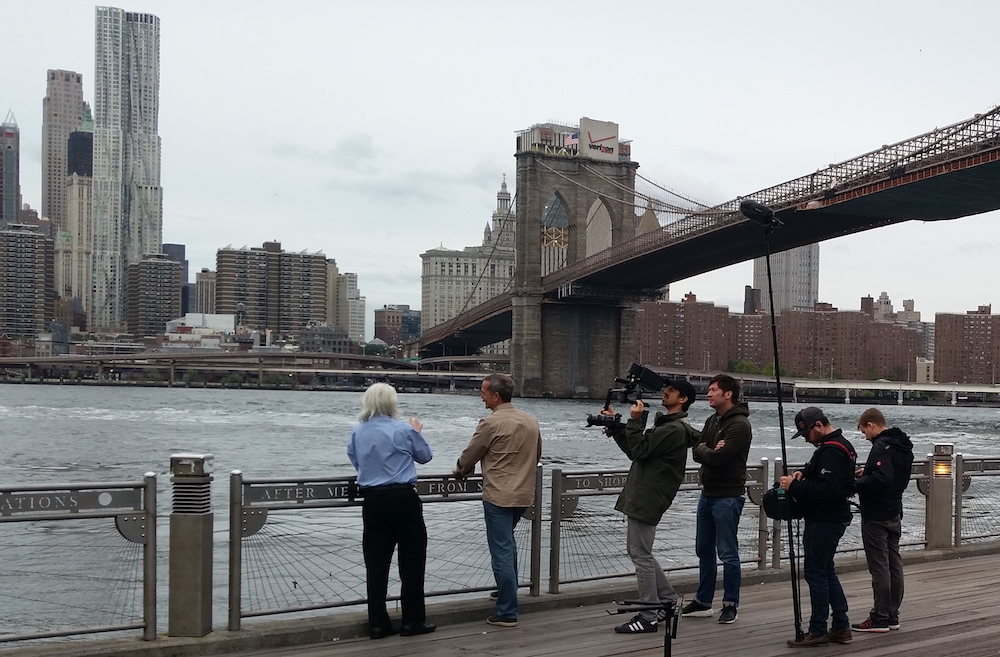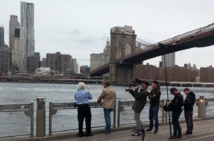New York (dpa) – A terrible confluence of weather systems converged off the US East Coast on that Monday in October 2012. A winter storm from the north, a full-moon flood tide and Hurricane Sandy, which already ravaged the Caribbean, came together and struck the New York metropolitan area as a once-in-a century storm, killing 40 people and leaving dozens injured.
Two million residents went days without electricity, and total damages amounted to billions of dollars. Some of that damage remains visible on the fifth anniversary of the storm – Sunday, October 29.
In sections of the city sitting on higher ground, like the Upper East Side, wind gusts shook windows and blew branches off the trees, but in a few hours residents could walk their dogs in the park again.
However, neighbourhoods situated along the approximately 840-kilometre coastal area were much harder hit. Many areas remain uninhabitable or are still not completely rebuilt.
Sandy was the worst natural disaster in New York's history, says Dan Zarrilli, the city's chief resilience officer. It was a "seminal moment" that revealed the metropolis' vulnerabilities.
Storms and sea level rise stemming from climate change are now very much on the municipal government's radar.
Much has been done since Sandy, Zarrilli said. For example, 200,000 homes were moved to higher ground. Energy provider ConEd and transportation authority MTA have invested millions and claim to be better prepared than they were in 2012.
Operators of the many skyscrapers on Manhattan's southern end, which went days without electricity in the aftermath of Sandy, have moved generators and other essential technology to higher locations.
The boardwalk along the Rockaway peninsula, which was almost entirely swept away in Sandy, has been rebuilt to be more stable than before, along with the sand dunes and other stabilization measures.
"We want to make sure that we use the money to build a better, more resilient city," Zarrilli said.
But not everything has been put right.
"Where we are standing there was a surge of 14 feet of water," said Jordan Salinger of the city government, standing at Battery Park on the extreme southern tip of Manhattan with the Statue of Liberty behind him.
Waves overran and ravaged Battery Park during the storm. Five years later many parts of the park remain under renovation, but it nevertheless looks like a well-maintained park, complete with new children's carousel.
"The conservancy made sure that it is a functioning park, but it is similarly vulnerable," Salinger said.
Efforts by authorities and lower Manhattan residents to create a plan for better flood protection are ongoing.
"It's not just building a wall, but building something that the community really wants. It's likely that it is going to look completely different here in 20 years," Salinger said.
Work on the east side will begin in 2019, with expected completion in 2024. What exactly will be built, however, remains unclear.
Despite progress in many isolated areas since Sandy, many activists and politicians remain concerned that the bigger picture has yet to be addressed.
"Here we are five years after Sandy and there's no plan in place for Lower Manhattan," community activist Catherine McVay Hughes told the New York Times. "There's still so much more to do."
Many speak of installing a giant floodgate in the harbour – which would be extremely expensive.
"It's urgent," Salinger said. "The people see what's happening in Puerto Rico, Florida or Texas and they see that it is urgent. We get calls every day, but it has to be the right project."
The city must become more resilient, and not just with hurricanes in mind, but all manner of disasters or natural catastrophes, said Michael Berkowitz of the Rockefeller Foundation's "100 Resilient Cities" project.
"The next big thing that happens in New York in is not going to be another Sandy and that's what resilience is all
Two million residents went days without electricity, and total damages amounted to billions of dollars. Some of that damage remains visible on the fifth anniversary of the storm – Sunday, October 29.
In sections of the city sitting on higher ground, like the Upper East Side, wind gusts shook windows and blew branches off the trees, but in a few hours residents could walk their dogs in the park again.
However, neighbourhoods situated along the approximately 840-kilometre coastal area were much harder hit. Many areas remain uninhabitable or are still not completely rebuilt.
Sandy was the worst natural disaster in New York's history, says Dan Zarrilli, the city's chief resilience officer. It was a "seminal moment" that revealed the metropolis' vulnerabilities.
Storms and sea level rise stemming from climate change are now very much on the municipal government's radar.
Much has been done since Sandy, Zarrilli said. For example, 200,000 homes were moved to higher ground. Energy provider ConEd and transportation authority MTA have invested millions and claim to be better prepared than they were in 2012.
Operators of the many skyscrapers on Manhattan's southern end, which went days without electricity in the aftermath of Sandy, have moved generators and other essential technology to higher locations.
The boardwalk along the Rockaway peninsula, which was almost entirely swept away in Sandy, has been rebuilt to be more stable than before, along with the sand dunes and other stabilization measures.
"We want to make sure that we use the money to build a better, more resilient city," Zarrilli said.
But not everything has been put right.
"Where we are standing there was a surge of 14 feet of water," said Jordan Salinger of the city government, standing at Battery Park on the extreme southern tip of Manhattan with the Statue of Liberty behind him.
Waves overran and ravaged Battery Park during the storm. Five years later many parts of the park remain under renovation, but it nevertheless looks like a well-maintained park, complete with new children's carousel.
"The conservancy made sure that it is a functioning park, but it is similarly vulnerable," Salinger said.
Efforts by authorities and lower Manhattan residents to create a plan for better flood protection are ongoing.
"It's not just building a wall, but building something that the community really wants. It's likely that it is going to look completely different here in 20 years," Salinger said.
Work on the east side will begin in 2019, with expected completion in 2024. What exactly will be built, however, remains unclear.
Despite progress in many isolated areas since Sandy, many activists and politicians remain concerned that the bigger picture has yet to be addressed.
"Here we are five years after Sandy and there's no plan in place for Lower Manhattan," community activist Catherine McVay Hughes told the New York Times. "There's still so much more to do."
Many speak of installing a giant floodgate in the harbour – which would be extremely expensive.
"It's urgent," Salinger said. "The people see what's happening in Puerto Rico, Florida or Texas and they see that it is urgent. We get calls every day, but it has to be the right project."
The city must become more resilient, and not just with hurricanes in mind, but all manner of disasters or natural catastrophes, said Michael Berkowitz of the Rockefeller Foundation's "100 Resilient Cities" project.
"The next big thing that happens in New York in is not going to be another Sandy and that's what resilience is all









 Home
Home Politics
Politics











